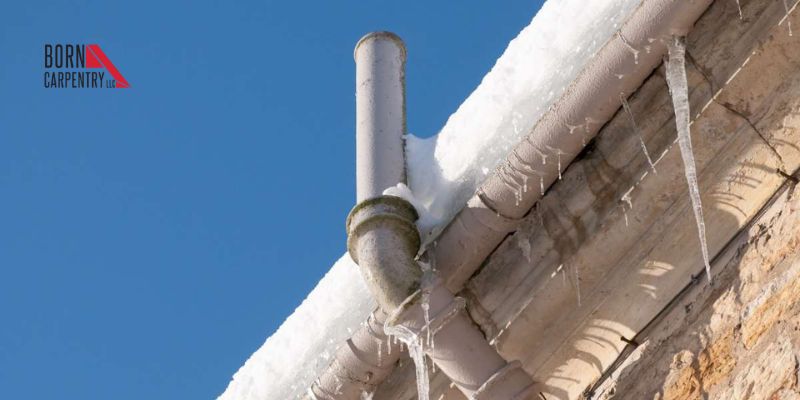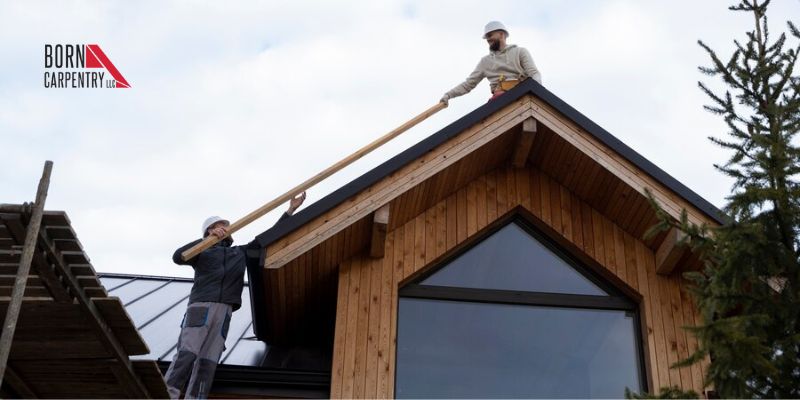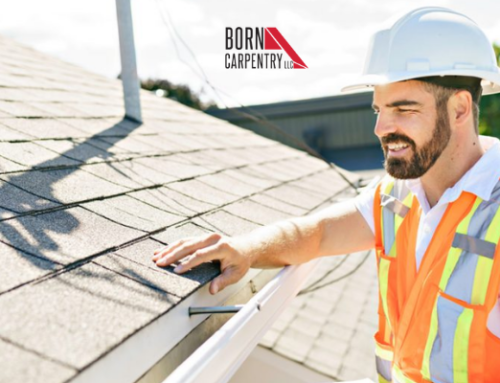To protect your roof from winter damage, it is necessary to ensure safety during the whole winter period. Proper preparations on the roofing ensure that it remains intact and avoids expensive retrofits in your house. This article gives information about best practices of winter roof maintenance to help protect your investment.
Safeguarding Your Roof in Winter: Best Practices for Roof Preparation
Ensure you prepare your roof for winter as it presents great danger. The accumulated snow and ice weight on the structure can lead to collapse. The formation of ice dams can also lead to water seepage into the interior, causing internal damage.
Moreover, ice fragments and branches might affect the roof structure when winter storms strike. Proper roof preparation is highly necessary. It is a proactive approach that reduces risks and maintains your roof’s structural integrity, ensuring the protection of your home from expensive repairs.
Below are the best practices for winter roof preparation:
1. Roof inspection
When winter draws near, a roof inspection is paramount. Look out for damaged or missing shingles, water leakage indicators, and vulnerable areas that could attract pest-related damage. Quickly correct any defects to prevent exacerbation of these issues in the winter season.
Proactive maintenance not only prevents seasonal attacks on your roof but also guards your property against structural damage and expensive repairs. If vulnerabilities are taken care of in advance, then such a roof survives the harsh weather conditions of winter. It assures peace to you and prolongs the period of life for your roof.
2. Clean gutters and downspouts

It is crucial to ensure regular maintenance of your gutters and downspouts in winter. The removal of leaves and other objects along with obstructions is important as it helps in the swift flow of melted snow. Such a preventive approach reduces the chance of ice dam formation, and hence, prevents water damage to your house.
You strengthen your gutter system by having an unobstructed flow for water runoff and securing your property against the risks involved during the winter. This simple but essential step helps to make your house more resilient to cold weather.
3. Insulate your attic
Prevent winter damage to your roof by making sure you have good attic insulation. A good attic insulation ensures a steady temperature which can help to reduce heat loss. The most important part of this preventive approach is addressing the issue of ice damming. Adequate insulation of the attic will prevent snow on the roof from melting and re-freeze at the eaves.
If you try to achieve a more equal temperature across the roof surface, you will reduce the risk of ice dams that can affect the durability of the roof in the winter. Make sure you check on and improve your attic insulations for better resistance of your home to seasonal obstacles.
4. Trim overhanging tree branches
Trimming overhanging branches should also be part of your winter roof preparation if your residence lies in an environment with a lot of trees. As a precaution against branches falling on your roof in stormy winter; this is important. Heavy snow or ice accumulation may result in broken branches due to weight strain.
Trimming overhanging branches in advance reduces roof damage and promotes safety. By doing this simple but essential step, you can protect your home from high costs of repairs, as well as strengthen your roof during the winter months.
5. Seal attic leaks
Winter roof preparation necessitates regular attic checks. Inspect for air leaks, open joints, and holes in insulations, and immediately seal them off to stop the warm air escape. Attic ventilation is just as important as air supply; it keeps the temperatures constant and avoids ice dam formation.
This way, you ensure that your attic space is well insulated and ventilated, minimizing the chances of structural damage. This is in addition to having a resilient roof against winter challenges. This is a proactive measure towards conserving energy and maintaining the well-being as well as longevity of your roof.
6. Check flashing and seals
Winter roof preparation includes checking on the flashing surrounding chimneys, vents, and any roof penetrations. Such vulnerable parts are highly susceptible and could easily undermine the strength of the roof. Look out for any signs of degradation and make sure that open spaces are sealed to prevent ingress of the waters.
In cases of leaks that arise due to faulty flashing, it results in structural issues and interior damage. Identifying these possible weaknesses in advance allows you to take action that will keep your building strong and ready for the winter season. It will also help to avoid the effects of rain from the roof which also adds to the strength of its longevity.
7. Install roof heating cables
Roof heating cables can be considered as a preventive measure in winter hazards. These are the cables that are placed on eaves and gutters so that they can effectively prevent the ice dams, which melt the accumulated snow and ice.
Heating cables provide a safe way by which water can drain out, therefore protecting the structures from damage. Such an approach serves as a precaution so that the roof may remain strong against cold challenges in winter when protecting your house.
8. Upgrade your roof

As your roof nears the end of its life, or shows extensive damage, it might be advisable to consider replacing it before winter arrives. A strong, professional installation roof provides maximum winter resistance and reduces the threat of structural problems and leaks.
Proactive replacement ensures that you stay ahead of winter by protecting your house and its contents with lasting peace of mind for you. As such, you must not forget to take this preventative step to protect your investment and home from more extensive and costly repairs in the future.
Conclusion
Investing early in winter preparation for a roof is an important measure for saving your home. The adoption of these best practices makes structures resistant to severe weather-related damage. Repeated check-ups, insulation inspections, and timely repairs enhance the integrity of the roof, giving one peace of mind in winter conditions.






